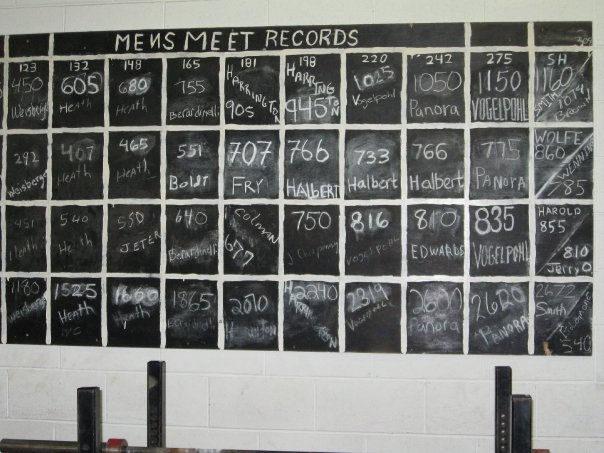In Season Training
- Dean Hansen
- Nov 21, 2024
- 4 min read
In-season training is frequently underestimated by athletes and coaches. During the off-season, the benefits of weight training are evident, as there are fewer competing priorities, allowing athletes to focus on building strength. However, once the season begins, there is often hesitation to continue in-season training due to concerns about energy expenditure in the weight room.
Initially, when I began playing baseball extensively, I was apprehensive that lifting would leave me too fatigued or sore to perform well in games. If we maintained the same intensity and frequency as in the off-season, this concern would be correct. However, with some adjustments, athletes can remain strong and powerful throughout the season. The college baseball season spans from mid-February to late May, or potentially into June. It is not advantageous to peak in strength in January when the most critical games are five months away.
When designing training programs, it is essential to consider the different phases of the season: the off-season, when there are no games; the pre-season, when practice begins in preparation for competition; and the in-season, when competitions are ongoing.
During my tenure at Ohio State, I typically worked with athletes from fall until Thanksgiving. Depending on their class schedule, I might not see them again until after winter break in early January, marking the end of the off-season. I defined the pre-season as the period from the start of school until mid-February, before games commenced, usually lasting 4-5 weeks.
To plan the pre-season, I first determined the in-season training requirements, incorporated a few additional elements, and thus developed the pre-season program.
I found it beneficial to align pre-season training closely with in-season training for several reasons. Primarily, this approach familiarized athletes with their routines and helped their bodies adapt, minimizing unexpected soreness and fatigue. Soreness generally occurs when engaging in unfamiliar activities, so maintaining consistent exercises reduced weight room-induced soreness.
During the Division 1 college baseball season, teams are permitted to play 56 regular season games, playing every Friday, Saturday, Sunday, and Tuesday and/or Wednesday. Mondays were off days with an optional lift and Thursdays are often travel days. Depending on the schedule, additional lifts occurred on Wednesdays or Thursdays, and in my last two years at Ohio State, we also lifted on Friday mornings while traveling.
In-season workouts typically lasted 30-40 minutes, with game day lifts on Fridays lasting 20-30 minutes.
In my final year, Mondays focused on upper body exercises, featuring heavy presses with low repetitions and accessory work targeting thoracic spine and ankle mobility.
The second lift of the week focused on lower body exercises, alternating between heavy days and speed-focused days. To maintain maximum strength, it is necessary to lift a heavy weight (85-90% of maximum) every 14 days. Therefore, one week involved a heavy single rep of either front squat or safety bar squat, and the next week consisted of four sets of two reps emphasizing bar speed. The routine also included various plyometrics or jumps, hamstring-focused exercises, and other accessories like hip mobility.
Friday lifts comprised weighted jumps, a moderately heavy deadlift, a light push and pull, and a lateral squat. Pitchers scheduled to throw that day engaged in a series of jumps and medball throws.
At Ohio State, we were fortunate to have access to advanced sports science resources. My most utilized tools were GymAware, which measured bar speed to ensure athletes lifted the correct weight, and the Hawkins Force Plate. The force plate was used biweekly to monitor athletes' fatigue and power outputs.
Athletes performed three individual counter movement jumps with hands on hips, providing valuable data on jump height, speed, force relative to body weight, left-to-right imbalances, and other metrics.
Mondays posed challenges for college baseball players, especially those from northern teams like ours, which often required extensive travel early in the season due to weather conditions in Columbus, Ohio. We frequently returned around midnight, crossing multiple time zones. Therefore, we used the force plate on Mondays to assess athletes' conditions post-weekend.
Due to a well-structured training plan, knowledgeable coaches who valued weight training, and dedicated athletes who diligently maintained their physical condition, it was common for athletes to achieve personal records on the force plate.
In my final year at Ohio State, a transfer athlete, known for his exceptional athleticism, recorded a 27.8-inch jump on the force plate during initial screening—the highest I had witnessed was 24.8 inches. A counter movement jump of 20 inches or more indicates explosiveness, and 27.8 inches was remarkable enough to capture the team's attention. With elite athletes, the goal is often to avoid hindering their natural talent, as their potential for improvement may be limited. This athlete exemplified that notion. On April 29, approximately three months into the season, he achieved a 31.98-inch jump on the force plate. Through consistent training, our athletes continued to strengthen and improve despite the challenges of games, travel, flight delays, bus trips, and long days at the field.

Establish a solid foundation in the off-season, prioritize key elements in the pre-season, and maintain training during the season. Keep sessions concise, focus on essentials, maintain low repetitions, and don't hesitate to lift substantial weights.
If you have inquiries regarding in-season training or any other topics, please feel free to reach out!



Comments